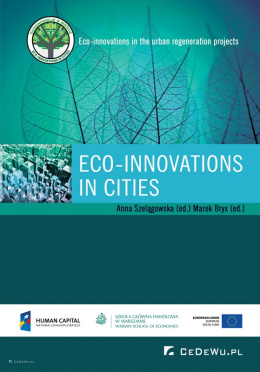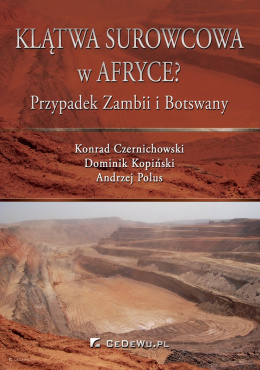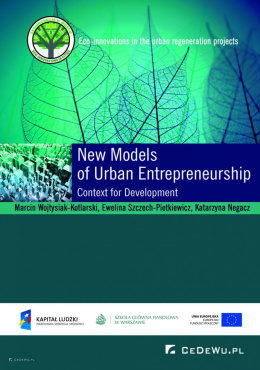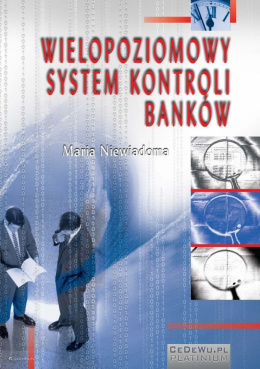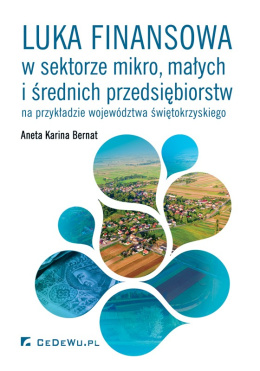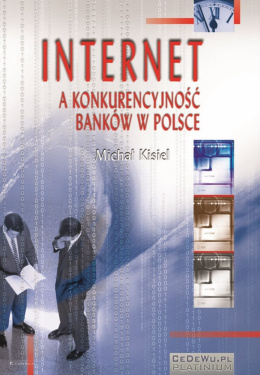-
Koszyk jest pusty
-
x

-
Koszyk jest pusty
-
x
- Kategorie
-
Green Project Funding
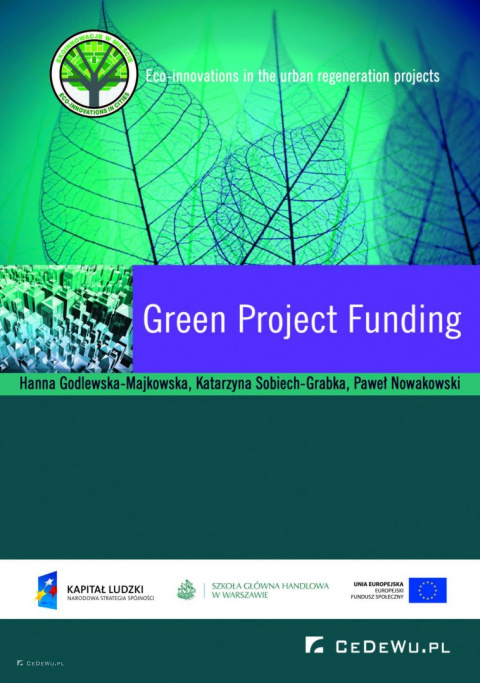
E-booki wysyłane są w formie linku do pobrania po zaksięgowaniu środków i zaakceptowaniu zamówienia przez Obsługę, jeżeli w opisie książki nie znajduje się gotowy link do pobrania publikacji. Wysyłka plików cyfrowych odbywa się od poniedziałku do piątku w godz. 10:00 – 18:00.
| Wysyłka w ciągu | 24 godziny |
| Kod kreskowy | |
| ISBN | 978-83-7941-219-8 |
| EAN | 9788379412198 |
Download
Pobierz plik: E-book 4 – Green Project Funding (pdf)
Do venture capitalists, headliners of today’s financial news, really play the leading role in financing green start-ups? Why is every source of capital not equally welcomed by entrepreneurs? What are the advantages of EU funds applied to eco-innovative investments? What makes the difference between green and traditional investments? Does location matter? What is psychic income?
The authors of the Green Project Funding E-book provide readers with sound and multidimensional answers to these and other questions, painting a clear picture of today's complex financial market for eco-innovative projects.
The book is a must-read for everyone interested in eco-innovations.
Czy fundusze typu venture, które okupują nagłówki informacji biznesowych, grają pierwsze skrzypce w finansowaniu zielonych przedsięwzięć w fazie start-up? Dlaczego nie każde źródło kapitału jest jednakowo dobrze postrzegane przez przedsiębiorców? Jakie są korzyści związane z finansowaniem eko-projektów ze środków europejskich? Z czego wynikają różnice między inwestycjami tradycyjnymi a ekoinnowacyjnymi? Czy lokalizacja ma znaczenie? Czym jest dochód psychiczny?
Autorzy ebooka Green Project Funding udzielają wielowątkowych i pogłębionych odpowiedzi na te ( i inne) pytania, z pasją kreśląc obraz złożonego współczesnego rynku finansowego dla zielonych projektów. Lektura obowiązkowa dla wszystkich zainteresowanych ekoinnowacjami.
Publisher's note 8
Introduction 10
Chapter 1
Framework for financing eco-innovations - Hanna Godlewska-Majkowska 12
Introduction
1.1. Introduction to financing eco-innovations 13
1.2. Demand conditioning of eco-innovations market 18
1.2.1. Investments in eco-innovations: micro- vs macroeconomic approach 19
1.2.2. Consumers' demand for eco-innovative investments 22
1.3. Global eco-innovation investment market 24
1.3.1. Determinants of development 24
1.3.2. Eco-innovative investments market dynamics 26
1.4. Mechanisms of eco-innovations financing 27
Summary 35
Literature 36
Chapter 2
Project finance and public-private partnerships in eco-innovations - Katarzyna Sobiech-Grabka 37
Introduction 37
2.1. The idea and core characteristics of project finance 38
2.2.1. Financial sources in project finance 42
2.2.2. Key risks in project finance 43
2.3. Essence of PPP 44
2.3.1. PPP and new public management 44
2.3.2. The key characteristics of PPPs 45
2.3.3. PPP models 48
2.3.4. Funding in PPP 50
2.3.5. Legal regulations of PPP in Poland 51
2.3.6. Remuneration of the private partner(s) 52
2.3.7. Governmental support and incentives 53
Concluding remarks 55
Literature 55
Chapter 3
Institutional and regulatory stimulates and incentives for eco-innovations - Paweł Nowakowski 57
Introduction 57
3.1. Regulations as the main factor influencing eco-innovations 58
3.2. International policies supporting eco-innovations 61
3.2.1. Kyoto Protocol and emission trading systems 61
3.2.2. EU Emissions Trading Systems 64
3.2.3. Using EU ETS for green projects funding - NER 300 65
3.3. Policies and regulations within the EU in support for green projects 65
3.3.1. EUROPE 2020 strategy 66
3.3.2. Eco-innovation Action Plan 67
3.3.3. Environmental Action Program to 2020 (EAP) 67
3.4. International institutions supporting green projects funding 68
3.4.1. The World Bank and regional development banks 68
3.4.2. The European Investment Bank 69
3.5. National institutions supporting eco-innovations by financing green projects 70
3.6. Types of environmental regulations supporting eco-innovations 71
3.6.1. "Carrot" and "stick" regulations 71
3.6.2. The "carrot-stick" regulations 73
3.7. Fiscal incentives in support of eco-innovations 76
3.7.1. Tax credits 77
3.7.2. Tax rate rebate 78
3.7.3. Tax deductions, capital allowances 78
3.7.4. Accelerated depreciation 78
3.7.5. Tax exemptions 79
3.8. Regulations promoting and financing renewable energy sources 80
3.8.1. Feed-in-Tariffs 83
3.8.2. Tradable Certificates System 86
3.8.3. Quota obligations and Tradable Certificates 87
3.9. Green Public Procurement regulations 88
Conclusions 90
Literature 90
Chapter 4
Green taxes - Katarzyna Sobiech-Grabka 93
Introduction - rationale for ecological taxation 93
4.1. Theoretical frames: public goods, the tragedy of the commons, and market failure 93
4.2. Main tools used 94
4.2.1. Taxes on pollution 97
4.2.2. Congestion charges 103
4.2.3. Extending green taxes to the waste industry 104
4.2.4. Effects on low-income households 105
Conclusions 106
Literature 107
Chapter 5
Availability of government grants, subsidies and other financial incentives for environmental innovation - Paweł Nowakowski 109
Introduction 109
5.1. Characteristics of government grants and subsidies in terms of form, scope and target beneficiary group 110
5.1.1. Public help 110
5.1.2. Types of projects financed by grants and subsidies 110
5.1.3. Forms of the support 111
5.1.4. Beneficiaries of grants and subsidies 111
5.2. Grants and subsidies within the EU National Operational Programs 112
5.2.1. Availability of subsidies and grants financed from the EU Funds in Poland 113
5.2.2. Operational Program Infrastructure and Environment 2014-2020 (OPI&E) 113
5.2.3. Intelligent Development Operational Program (ID OP) 115
5.2.4. Eastern Poland Operational Program (EP OP) 117
5.2.5. Regional Operational Programs (ROP) 118
5.3. Funding provided for green projects within the EU Framework Programs 119
5.3.1. Horizon 2020 119
5.3.2. LIFE Programme 123
5.4. Polish governmental subsidies and grants 124
5.5. Other types of direct financial support allocated by government in Poland 130
5.5.1. EEA Grants and Norway Grants 130
5.5.2. Thermo-modernization and Retrofitting Fund 130
5.6. Examples of state subsidies and grants available for green projects in other countries 131
5.6.1. Australia 131
5.6.2. The United Kingdom 132
5.6.3. Canada 133
Conclusions 133
Chapter 6
Barriers to accessing eco-finance - Paweł Nowakowski 135
Introduction 135
6.1. Types of barriers 135
6.1.1. Location barrier 136
6.1.2. Policy and regulatory insecurity 136
6.1.3. Technological risks 137
6.1.4. Market barriers 137
6.1.5. Insufficient collateral 138
6.1.6. Investment scale 138
6.2. Barriers to access finance for eco-innovative SMEs 139
Conclusions
Literature 140
Chapter 7
Instruments facilitating access to eco-finance - Paweł Nowakowski 142
7.1. Risk sharing instruments 142
7.1.1. Introduction 142
7.1.2. Debt financing risk-sharing instruments 143
7.1.3. Business angel co-financing instruments 147
Literature 160
7.2. JESSICA as an example of a reimbursement fund 162
7.2.1. Introduction 162
7.2.2. Financing sources for JESSICA 164
7.2.3. Organizational framework and implementation 164
7.2.4. Available forms of support 167
7.2.5. Major differences between JESSICA and grant type funding 168
7.2.6. Benefits generated by JESSICA 169
7.2.7. JESSICA in Poland 171
7.2.8. JESSICA in other Member States 173
7.2.9. Technical and financial aspects of JESSICA 174
Conclusions 178
Literature 178
7.3. Business incubators and eco-incubators 180
7.3.1. The cleantech eco-system 180
7.3.2. Cleantech Incubation Process 181
7.3.3. Benefits available within the incubation process 183
7.3.4. Examples of eco- and cleantech incubators 184
Conclusion . 185
Literature 185
Chapter 8
Overview of possible forms of commercial funding for eco-innovations - Katarzyna Sobiech-Grabka 187
Introduction 187
8.1. Debt financing 190
8.1.1. Bank credits 190
8.1.2. Microcredits 192
8.1.3. Bank guarantees
8.1.4. Green bonds 196
8.2. Equity financing 197
8.2.1. Eco-business angel (BA) funding 197
8.2.2. Venture Capital 203
8.2.3. Access to equity in Poland 207
8.2.4. Pre-IPO sources 209
Conclusions 210
Literature 212
Table of Contents 214
Figure of Contents 215
Box of Contents 217
Polub nas na Facebooku



